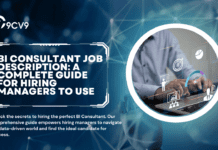Key Takeaways
- Sweden’s 2025 labor market faces persistent skills shortages despite economic stagnation, driving high demand in IT, healthcare, finance, and life sciences.
- Hybrid work, competitive benefits, and robust employer branding are critical for attracting and retaining top talent in a competitive environment.
- Upskilling, reskilling, and strategic international recruitment are essential for bridging talent gaps and navigating new regulatory and work permit requirements.
The hiring and recruitment landscape in Sweden for 2025 presents a complex and multifaceted scenario shaped by macroeconomic fluctuations, evolving industry demands, and demographic shifts. As the Swedish economy continues to navigate the lingering effects of a protracted recession that began in late 2024, employers and job seekers alike are facing a labor market characterized by both challenges and opportunities. Despite overall economic stagnation, specific sectors such as healthcare, information technology, finance, and life sciences are experiencing acute talent shortages, creating a highly competitive environment for skilled professionals.

Understanding the state of hiring in Sweden requires an in-depth analysis of labor market indicators, which reveal an uneven distribution of employment opportunities across industries, regions, and demographic groups. While the national unemployment rate hovers around 9.4%, youth and foreign-born workers face disproportionately higher levels of joblessness, underscoring structural disparities that go beyond cyclical economic trends. Meanwhile, workforce participation rates and employment figures suggest that employers are adopting strategies to retain talent through flexible work arrangements, including hybrid and remote models, even as total hours worked show a slight decline.
The skills gap in Sweden has become a defining feature of the 2025 labor market. A majority of companies report difficulty in finding candidates with the necessary technical and soft skills, highlighting a critical mismatch between available labor and employer needs. High-demand roles span AI and machine learning, cybersecurity, cloud architecture, software engineering, and specialized healthcare positions, reflecting the increasing influence of technological adoption and demographic pressures on workforce planning. This scenario necessitates a strategic focus on upskilling, reskilling, and targeted recruitment initiatives to bridge the talent divide and maintain Sweden’s global competitiveness.
In addition to skills and industry-specific challenges, recruitment strategies are being reshaped by new work paradigms, compensation expectations, and regulatory developments. Hybrid work models have transitioned from temporary solutions to core employee expectations, while competitive compensation packages and comprehensive benefits are critical tools for attracting and retaining top talent. At the same time, legislative changes related to work permits, employment security for temporary workers, and recognition of foreign qualifications are influencing how international talent can enter and integrate into the Swedish labor market. Employers must navigate these changes strategically to secure skilled professionals while ensuring compliance and fostering a diverse and inclusive workplace.
This comprehensive overview of the Swedish hiring and recruitment landscape in 2025 examines key trends, industry-specific demands, demographic considerations, and emerging strategies for both employers and job seekers. By analyzing labor market statistics, skills shortages, technological adoption, and regulatory frameworks, this report provides actionable insights into how organizations can adapt to a rapidly evolving labor market while maintaining a competitive edge. For professionals seeking opportunities, understanding these dynamics is essential for aligning skills with market demand, navigating the complexities of work permits and international integration, and positioning themselves effectively in a highly selective and evolving employment environment.
This blog will serve as an authoritative guide to understanding the state of hiring and recruitment in Sweden for 2025, offering a data-driven, strategic, and forward-looking perspective that is indispensable for employers, HR professionals, and job seekers aiming to thrive in one of Europe’s most dynamic labor markets.
Before we venture further into this article, we would like to share who we are and what we do.
About 9cv9
9cv9 is a business tech startup based in Singapore and Asia, with a strong presence all over the world.
With over nine years of startup and business experience, and being highly involved in connecting with thousands of companies and startups, the 9cv9 team has listed some important learning points in this overview of The State of Hiring and Recruitment in Sweden for 2025.
If your company needs recruitment and headhunting services to hire top-quality employees, you can use 9cv9 headhunting and recruitment services to hire top talents and candidates. Find out more here, or send over an email to [email protected].
Or just post 1 free job posting here at 9cv9 Hiring Portal in under 10 minutes.
The State of Hiring and Recruitment in Sweden for 2025
- The Macroeconomic and Labor Market Context in 2025
- The Pervasive Skills Gap and Evolving Demands
- Strategic Trends in Hiring and Recruitment
- Navigating the Regulatory Landscape and Talent Acquisition Challenges
- Actionable Recommendations
1. The Macroeconomic and Labor Market Context in 2025
Macroeconomic and Labor Market Context
- Sweden’s economy in 2025 is navigating a prolonged recession initiated in late 2024, characterized by subdued growth and economic uncertainty.
- Key economic institutions, including the Ministry of Finance and the Swedish National Institute of Economic Research, forecast modest growth of approximately 0.7% for 2025, down from earlier estimates.
- This restrained economic expansion is influenced by heightened geopolitical risks and weakened global economic conditions, which collectively dampen labor demand.
- Despite these challenges, certain sectors demonstrate resilience, as evidenced by an optimistic employer outlook reported by ManpowerGroup, showing a +17% employment forecast— the highest in the past year.
- The labor market recovery appears uneven, with specific industries exhibiting strong hiring activity, counterbalancing stagnant or declining demand in others.
- This duality indicates that while the overall economy struggles, niche labor markets are generating significant opportunities for skilled professionals.
Labor Market Indicators: Mid-2025 Snapshot
- Employment levels for individuals aged 15-74 reached 5,402,000 on a non-seasonally adjusted basis as of June 2025, with an employment rate of 70.9%.
- Seasonally adjusted figures show slightly lower employment numbers at 5,272,000, corresponding to a 69.1% employment rate, but indicate a positive upward trend compared to previous months.
- Unemployment remains elevated, with 559,000 unemployed individuals non-seasonally adjusted, yielding a 9.4% unemployment rate; seasonally adjusted unemployment stands at 8.7%.
- Youth unemployment poses a significant challenge, with rates near 30% non-adjusted and 23.7% adjusted, reflecting difficulties faced by younger workers entering the labor market.
- Labor force participation for the 15-74 age group is robust at 78.2%, signaling continued engagement despite economic headwinds.
- Total weekly hours worked decreased by 2.3% year-over-year to 154.3 million hours, suggesting a scenario where employers retain staff but reduce individual workloads, a strategy often used to maintain workforce stability during downturns.
Labor Market Indicators Table (June 2025)
| Indicator | Non-Seasonally Adjusted | Seasonally Adjusted |
|---|---|---|
| Employed Persons (15-74 years) | 5,402,000 | 5,272,000 |
| Employment Rate (15-74 years) | 70.9% | 69.1% |
| Unemployed Persons (15-74 years) | 559,000 | 500,000 |
| Unemployment Rate (15-74 years) | 9.4% | 8.7% |
| Labor Force Participation Rate | 78.2% | 75.7% |
| Total Hours Worked (weekly avg) | 154.3 million (2.3% YoY decrease) | 154.8 million |
| Unemployed Youth (15-24 years) | 256,000 | 164,000 |
| Youth Unemployment Rate (15-24 years) | 29.7% | 23.7% |
Demographic Disparities and Structural Challenges
- A pronounced disparity exists in unemployment rates when examined by demographic groups, exposing a dual labor market structure.
- Youth unemployment remains disproportionately high, reflecting challenges related to limited labor market experience and economic uncertainty impacting entry-level positions.
- Foreign-born individuals face notably higher unemployment rates, with 12.4% unemployed compared to 3.3% among native-born Swedes as of mid-2025.
- This gap suggests systemic barriers including language proficiency issues, integration policy inefficiencies, and potential discrimination within the recruitment process.
- Despite high educational attainment levels among foreign-born populations, their underemployment underscores the need for targeted policy interventions to enhance integration and labor market participation.
- Gender disparities are evident, with male unemployment at 10.1%, higher than the female rate of 8.5%, highlighting persistent gender-based labor market dynamics.
Unemployment Rates by Demographic Group Table (May/June 2025)
| Demographic Group | Unemployment Rate | Number Unemployed |
|---|---|---|
| Total Population (15-74 years) | 9.4% | 559,000 |
| Women | 8.5% | 240,000 |
| Men | 10.1% | 319,000 |
| Youth (15-24 years) | 29.7% | 256,000 |
| Native-Born (May 2025) | 3.3% | Not specified |
| Foreign-Born (May 2025) | 12.4% | Not specified |
Key Implications for Recruitment and Hiring Strategies
- Recruiters and employers must acknowledge the heterogeneous nature of Sweden’s labor market in 2025, focusing on sectors exhibiting growth despite macroeconomic pressures.
- Targeted efforts to reduce youth unemployment require tailored programs that enhance skills development, apprenticeships, and pathways to employment.
- Effective integration strategies for foreign-born workers remain critical to unlocking underutilized talent pools, requiring enhanced language training, recognition of foreign qualifications, and inclusive hiring practices.
- Workforce planning should account for potential productivity challenges linked to reduced working hours, balancing retention with operational efficiency.
- Organizations benefit from monitoring labor market data closely to identify emerging hiring trends and adapt recruitment strategies accordingly.
2. The Pervasive Skills Gap and Evolving Demands
Critical State of the Skills Shortage
- Sweden in 2025 is experiencing a paradoxical labor market where high unemployment coexists with a severe and escalating skills shortage, posing a major challenge to corporate competitiveness.
- A recent survey by ManpowerGroup, involving 788 Swedish employers, indicates that 76% of companies struggle to find candidates with the appropriate skills—a proportion that has nearly doubled over the past decade.
- The shortage is pervasive across all sectors, with every industry reporting a minimum 60% difficulty in filling roles, surpassing the global average of 74%, highlighting Sweden’s particularly acute talent constraints.
- The root of this mismatch lies not in a scarcity of workers but in a misalignment between available skills and the specialized capabilities demanded by employers.
- Technological advancements, especially in generative AI, are a key driver of this skills gap, necessitating large-scale reskilling. Projections indicate that by 2025, approximately 50% of employees will require reskilling to keep pace with technological adoption.
- For Swedish businesses, the central challenge extends beyond recruitment, demanding strategic workforce planning that incorporates robust upskilling and reskilling initiatives to close the talent divide.
Industries and Roles Experiencing the Greatest Demand
- Talent deficits are concentrated in specific sectors and roles, reflecting both opportunity and competitive pressure for recruitment.
- The most affected sectors include:
- Health, medical care, and life sciences (84% report shortages)
- IT industry (83% shortages)
- Energy and community services (83% shortages)
- Employment forecasts align with these shortages, indicating strong hiring intentions in high-demand sectors:
- Banking, finance, and real estate: +43%
- Health, healthcare, and life sciences: +26%
- IT industry: +23%
- Industries such as transport, logistics, automotive (+2%) and energy/community services (0%) display minimal growth, highlighting an uneven hiring landscape.
- High-demand roles include AI and Machine Learning Engineers, Data Scientists, Cloud Architects, Software Engineers, and Cybersecurity Experts.
- In essential services, the shortage extends to healthcare professionals (geriatric and intensive care nurses), educators, and skilled construction workers.
Skills Shortage and Employment Forecast by Industry Table (Q1 2025)
| Industry | Employment Forecast | Reported Skills Shortage |
|---|---|---|
| Banking, Finance, Real Estate | +43% | Not specified |
| Health, Healthcare, Life Sciences | +26% | 84% |
| Service Industry, Wholesale/Retail | +24% | Not specified |
| IT Industry | +23% | 83% |
| Raw Materials, Green Industries, Construction | +18% | >60% |
| Transport, Logistics, Automotive | +2% | Not specified |
| Energy and Community Services | 0% | 83% |
The New Skill Paradigm: Integration of Technical and Human-Centric Skills
- The current talent gap reflects a demand for a hybrid of advanced technical expertise and human-centric competencies.
- Technological adoption, particularly AI, has accelerated the need for specialized skillsets. The Swedish machine learning sector alone is projected to expand by 36.14% through 2030.
- Already, over 52% of professionals in Sweden utilize AI tools at work, with adoption expected to increase, emphasizing the necessity of proficiency in programming languages such as Python, Java, C++, Rust, Swift, and emerging frameworks for cloud computing.
- Cybersecurity remains critical, with a growing emphasis on network security, ethical hacking, and AI-driven threat detection.
- Soft skills are increasingly valued alongside technical capabilities. Employers prioritize creative thinking, resilience, flexibility, strategic decision-making, and cross-cultural communication.
- Candidates combining technical expertise with strong interpersonal and communication skills are in highest demand, reflecting the evolving modern workplace that emphasizes collaboration, agility, and flat organizational hierarchies.
Key In-Demand Technical Skills and Estimated Salaries (2025)
| Skill Category | Specific Skills/Languages | Annual Salary Range (SEK) |
|---|---|---|
| AI & Machine Learning | Machine learning algorithms, Python, Data analysis, AI ethics | Not specified |
| IT & Software | Python, Java, JavaScript, Rust, Swift, React, Angular | 1,750,000 |
| Cybersecurity | Network security, Ethical hacking, Cloud security, Data privacy | Not specified |
| Data Science & Analytics | Data analysis, Tableau, Power BI, Statistical analysis | Not specified |
| Financial Services | Financial analysis, Auditing, Risk management, Tax planning | Not specified |
| Engineering | Mechanical, Electrical, Design engineering | 3,000,000 |
| Marketing & Sales | Digital marketing, SEO/SEM, Brand management | 2,080,000 |
| Healthcare | Patient care, Geriatric care, Medical technology operations | Not specified |
| Human Resources | Talent management, DEI, Strategic decision-making | 2,139,500 |
Strategic Implications for Recruitment
- Employers must adopt a dual-focused approach addressing both technical skill deficits and human-centric competencies.
- Recruitment strategies should prioritize high-demand sectors and roles while offering targeted reskilling programs to bridge gaps.
- Competitive talent markets in healthcare, IT, and finance necessitate enhanced employer branding and retention incentives.
- Organizations must balance workforce retention with productivity management, particularly in industries where high employment levels coexist with reduced work hours.
- The evolving Swedish labor market in 2025 requires agile, data-driven workforce planning to ensure sustainable competitiveness and talent utilization.
3. Strategic Trends in Hiring and Recruitment
Normalization of Hybrid Work
- The hybrid work model has solidified as a standard employment arrangement in 2025, reflecting a fundamental shift in workforce expectations.
- Although full-time remote work peaked in 2020, hybrid arrangements now dominate, combining office presence with remote flexibility.
- Approximately 35% of Swedish workers operate remotely, either fully or partially, with the IT, finance, and professional services sectors leading adoption.
- Flexibility is now a core professional expectation; mandating full-time office attendance risks attrition.
- Research indicates that 44% of hybrid employees would consider seeking new employment if forced into full-time office schedules, and 5% would resign outright.
- The “coffee badging” phenomenon, where 38% of employees visit the office minimally to maintain visibility, illustrates the importance of flexible policies in retaining talent.
- Organizations offering adaptable work models gain a competitive advantage in retaining skilled employees, making flexibility a non-negotiable recruitment strategy in 2025.
Compensation, Benefits, and Talent Attraction
- Competitive remuneration remains a pivotal lever in attracting and retaining high-caliber professionals.
- The average hourly wage in Sweden increased to SEK 206.90 by May 2025, reflecting a rising trend in labor costs.
- Highly skilled professionals, particularly in tech and specialized industries, are experiencing projected salary growth of 15-20%, with experienced individuals earning over €6,000 monthly.
- Comprehensive benefits packages have become essential differentiators. Examples include:
- 30 days of annual vacation for full-time employees
- Fully employer-paid private medical insurance
- Pension contributions of 4.5% on salaries up to 7.5 times the Income Base Amount (IBA)
- Wellness allowances, such as annual sport cards valued at SEK 5,000
- Government policy is impacting compensation strategies. The minimum salary for work permits was increased to SEK 29,680 per month, equivalent to 80% of the national median, aiming to prevent wage dumping and attract higher-skilled foreign labor.
- This policy, however, challenges the recruitment of low-paid, high-demand roles in sectors like agriculture, construction, and care, which historically relied on foreign labor.
New Recruitment and Sourcing Strategies
- Swedish employers are increasingly blending human-centric approaches with technology-driven recruitment to address the talent gap.
- Contingent staffing is gaining prominence, enabling companies to hire professionals on contract or project-specific terms, particularly in IT, healthcare, and manufacturing. This approach offers flexibility and immediate access to specialized skills.
- Employer branding has become critical, with organizations showcasing culture, values, and DEI initiatives to attract top talent. Evidence suggests diverse workforces enhance productivity by 35%, making DEI a strategic recruitment priority.
- Referral programs remain effective, with studies indicating that approximately 70% of roles are filled through personal and professional networks.
- Technological integration is accelerating; globally, 87% of companies utilize AI-driven recruitment tools, and 73% plan further investment in automation.
- AI is primarily used for candidate sourcing (58% of recruiters) and can reduce hiring costs by up to 30% per hire. This enables recruiters to focus on strategic tasks such as relationship-building and cultural fit assessment.
- The average time-to-hire in Sweden is 44 days but can extend beyond 60 days for complex engineering and technical roles. Recruitment agencies are widely used, often delivering suitable candidates within 2-4 months.
Hybrid Work Adoption and Compensation Matrix (2025)
| Category | Adoption/Metric | Notes |
|---|---|---|
| Remote/Hybrid Work | 35% of workforce | Leading sectors: IT, Finance, Professional Services |
| Full-Time Remote | 28% | Less prevalent than hybrid |
| Office-Only | 21% | Traditional model declining |
| Average Hourly Wage | SEK 206.90 | May 2025, up from SEK 204 in April |
| High-Skill Salary Growth | +15-20% | Experienced professionals > €6,000/month |
| Vacation | 30 days | Full-time employees |
| Private Health Insurance | 100% employer-paid | Critical differentiator |
| Pension Contribution | 4.5% | Up to 7.5x IBA |
| Wellness Allowance | SEK 5,000/year | Optional benefit |
Recruitment Technology and Strategy Matrix (2025)
| Strategy | Adoption Rate | Benefits |
|---|---|---|
| Contingent Staffing | High in IT, Healthcare, Manufacturing | Flexibility, immediate skills access |
| Employer Branding & DEI | Widespread | Talent attraction, productivity increase |
| Referral Programs | 70% jobs filled via referrals | Efficient, high-quality hiring |
| AI-Driven Sourcing | 58% recruiters use | Reduces time and cost per hire |
| Recruitment Automation | 73% planning investment | Frees recruiters for strategic tasks |
| Recruitment Agencies | Common | 2-4 month placement timeline |
4. Navigating the Regulatory Landscape and Talent Acquisition Challenges
Key Legislative Changes and Their Impact
- The Swedish labor market in 2025 is significantly influenced by recent legislative reforms aimed at enhancing flexibility for high-skilled workers and strengthening employee protections.
- Amendments to work permit regulations now allow foreign professionals to retain their permit for up to six months during unemployment, a notable extension from the prior 90-day limit. This decoupling from a specific employer or profession enhances Sweden’s attractiveness to international talent and aligns with broader EU objectives for streamlined legal migration.
- A regulation effective October 2024 mandates that temporary agency workers assigned to the same operating unit for more than 24 months within a 36-month period must be offered indefinite-term employment. This measure is intended to increase job security and reduce precarious work conditions.
- The new Unemployment Insurance Act introduces income-based benefits rather than hours worked, with intermediate compensation for members of unemployment funds between six and twelve months.
- These legislative initiatives reflect a dual strategy by the Swedish government: fostering high-skilled foreign labor inflow while improving protections for existing workers and mitigating potential exploitation in low-wage sectors.
- Employers must also consider the impact of around 500 central-level collective bargaining agreements scheduled for renegotiation in 2025, affecting over 3.4 million employees. Strategic planning and compliance will be essential to navigate these regulatory changes successfully.
Challenges for International Talent and Employer Strategies
- Sweden remains an attractive destination for skilled international professionals, but recruitment and retention present unique challenges.
- Language proficiency is a critical barrier; approximately 70% of employers, including those in internationally oriented sectors like IT, require good Swedish language skills. Healthcare and public sector roles particularly demand advanced Swedish proficiency.
- Recognition of foreign qualifications remains complex for regulated professions, including medicine, law, and engineering. While tools like the Swedish Council for Higher Education’s online platform facilitate initial assessment, the overall approval process is still cumbersome and time-consuming.
- The raised work permit salary threshold of SEK 29,680 per month imposes additional constraints for non-EU candidates, necessitating pre-secured employment offers meeting this minimum.
- Proactive employer strategies are now indispensable for effective talent acquisition and retention. Best practices include:
- Assistance with work permit applications and navigating bureaucratic requirements
- Swedish language training programs for international hires
- Cultural integration support to familiarize employees with Sweden’s collaborative, flat-hierarchy workplace culture
- Structured onboarding programs emphasizing work-life balance and teamwork, essential elements of Swedish organizational norms
- Companies investing in these support systems gain a distinct advantage, reducing attrition and fostering loyalty among international professionals. Such approaches are increasingly critical to addressing the persistent skills gap, particularly in high-demand sectors such as IT, healthcare, and engineering.
Regulatory Impact and International Talent Strategy Matrix (2025)
| Category | Key Measures | Implications for Employers |
|---|---|---|
| Work Permit Flexibility | 6-month retention during unemployment | Easier recruitment of high-skilled foreign labor, less dependency on a single employer |
| Temporary Worker Protections | Mandatory indefinite-term after 24 months | Increased job security, requires workforce planning adjustments |
| Unemployment Insurance | Income-based benefits | Greater predictability for employee compensation planning |
| Language Requirements | Swedish proficiency for 70% of roles | Necessitates language training programs |
| Qualification Recognition | Assessment for regulated professions | Employers must support credential validation |
| Minimum Salary Threshold | SEK 29,680/month for work permits | Impacts recruitment in low-paid roles, increases planning complexity |
| Integration Programs | Cultural orientation, onboarding, mentorship | Critical for retention and successful performance of international hires |
5. Actionable Recommendations
Embracing the Complex Labor Market Landscape
- Sweden’s labor market in 2025 presents a unique dichotomy: overall economic stagnation coexists with acute talent shortages in specialized sectors.
- Employers and job seekers must adopt a sophisticated, adaptive approach to succeed, balancing macroeconomic challenges with targeted strategies to address high-demand roles.
- Data-driven decision-making is essential, enabling market participants to allocate resources efficiently, identify emerging opportunities, and remain competitive in a dynamic environment.
Employer-Focused Strategies
- Embrace and Standardize the Hybrid Work Model
- Recognize that flexible work arrangements are now a core expectation for employees.
- Implement clear and structured hybrid policies to attract and retain top talent.
- Research indicates that employees are likely to leave or disengage if forced into full-time office attendance, emphasizing flexibility as a strategic retention tool.
- Invest in Upskilling and Reskilling Programs
- Address the persistent skills mismatch by cultivating the existing workforce.
- Focus on high-demand areas including AI and Machine Learning, cybersecurity, data analytics, and cloud computing.
- Establish continuous learning programs that integrate technical training with soft skills development, enhancing adaptability and long-term employability.
- Leverage Contingent and Project-Based Staffing
- Utilize contract, freelance, and project-specific professionals to rapidly fill urgent skills gaps.
- Particularly relevant for critical sectors such as IT, healthcare, and engineering.
- Provides organizational flexibility while granting access to specialized expertise without long-term employment obligations.
- Enhance Employer Brand and Comprehensive Benefits
- Differentiate the organization through a transparent and compelling employer value proposition.
- Offer benefits exceeding legal requirements, including private medical insurance, extended vacation, wellness programs, and flexible work arrangements.
- Promote company culture, values, and diversity, equity, and inclusion initiatives to attract highly skilled talent and enhance retention.
Job Seeker-Focused Strategies
- Focus on In-Demand Skills
- Prioritize developing competencies aligned with acute talent shortages, especially in AI/ML, cybersecurity, data science, and cloud computing.
- Proficiency in high-value programming languages such as Python, Java, and emerging technologies positions candidates competitively.
- Prepare for Hybrid and Collaborative Work Environments
- Employers increasingly evaluate soft skills including communication, adaptability, and teamwork.
- Candidates should demonstrate their ability to navigate flexible work structures and contribute effectively in hybrid settings.
- Strategic Networking and Industry Engagement
- Recognize that approximately 70% of positions are filled through professional networks.
- Actively cultivate relationships, participate in industry events, and leverage professional platforms to access opportunities not publicly advertised.
- Navigate International Hiring Processes
- Foreign candidates must consider work permit salary thresholds, currently set at SEK 29,680 per month, and demonstrate Swedish language proficiency when required.
- Understanding credential recognition procedures for regulated professions is essential, especially in healthcare, law, and education.
- Research employers offering structured support for international hires, including onboarding, language training, and cultural integration initiatives.
Hiring and Recruitment Strategy Matrix (2025)
| Focus Area | Employer Actions | Candidate Actions | Expected Impact |
|---|---|---|---|
| Hybrid Work | Implement structured hybrid policies | Demonstrate adaptability and communication skills | Improved retention, enhanced engagement |
| Upskilling/Reskilling | Training programs in AI, cybersecurity, analytics | Pursue high-demand skills | Narrow skills gap, increase employability |
| Contingent Staffing | Utilize project-based hires | Consider short-term or project roles | Rapidly address skills shortages, maintain agility |
| Employer Brand & Benefits | Offer competitive compensation, DEI initiatives, wellness programs | Evaluate company culture and benefits | Attract and retain top talent, boost productivity |
| Networking | Promote referral programs, industry engagement | Build professional networks | Access hidden job opportunities, career growth |
| International Hiring Support | Assist with permits, language training, cultural onboarding | Navigate regulations, enhance language proficiency | Smooth integration, reduced attrition |
Conclusion
The hiring and recruitment landscape in Sweden for 2025 presents a complex and multifaceted picture, shaped by the interplay of macroeconomic challenges, persistent skills shortages, evolving workplace expectations, and significant regulatory changes. While the broader economy continues to experience subdued growth and lingering effects of a protracted recession, certain sectors demonstrate remarkable resilience, driving robust hiring intentions for specialized professionals. This juxtaposition of economic stagnation and high-demand talent markets underscores the need for strategic, data-driven approaches from both employers and job seekers.
For Swedish employers, the imperative is clear: adapt to an environment characterized by high expectations for flexibility, competitive compensation, and sophisticated talent management. Hybrid work arrangements are no longer optional perks but essential components of a compelling employer value proposition. Companies that fail to accommodate flexible work risk losing top talent to competitors who provide hybrid or fully remote options. Similarly, investment in upskilling and reskilling is not merely an organizational benefit but a strategic necessity. By equipping employees with competencies in artificial intelligence, cybersecurity, data analytics, cloud computing, and emerging technologies, organizations can close the skills gap while fostering adaptability and long-term workforce sustainability.
Contingent staffing and project-based hiring have also emerged as vital tools in addressing immediate skills shortages, particularly in critical sectors such as IT, healthcare, engineering, and life sciences. These strategies allow companies to access specialized expertise without committing to long-term employment contracts, providing agility and responsiveness in a labor market defined by scarcity and competition. Alongside staffing strategies, a strong employer brand combined with comprehensive benefits—including private medical insurance, extended vacation, wellness programs, and DEI initiatives—remains a critical differentiator in attracting and retaining highly skilled professionals.
From the perspective of job seekers, success in Sweden’s 2025 labor market requires deliberate alignment with market demands and strategic preparation. Candidates must focus on developing in-demand technical skills, including AI, machine learning, cybersecurity, and advanced programming, while also cultivating critical soft skills such as adaptability, collaboration, and cross-cultural communication. Networking remains a powerful mechanism for uncovering opportunities, with a significant proportion of roles filled through professional connections. For international professionals, navigating work permit regulations, salary thresholds, and qualification recognition processes is essential, alongside integrating into Sweden’s collaborative, flat-hierarchy workplace culture.
The regulatory landscape further shapes recruitment dynamics in 2025, with new work permit policies, unemployment insurance reforms, and protections for temporary workers creating both opportunities and challenges. Employers must balance compliance with proactive strategies for integrating international talent, providing language support, cultural orientation, and mentorship programs to ensure smooth onboarding and long-term retention. Companies that strategically leverage these regulatory frameworks can access a broader talent pool while strengthening workforce stability.
Ultimately, the state of hiring and recruitment in Sweden for 2025 reflects a market defined by contrasts and opportunities. While macroeconomic conditions remain cautious, high-demand sectors offer robust prospects for skilled professionals. Employers who implement flexible work policies, invest in reskilling, strengthen employer branding, and adopt innovative recruitment strategies will secure a competitive advantage in attracting and retaining talent. Concurrently, job seekers who prioritize in-demand skills, embrace hybrid work readiness, cultivate strategic networks, and navigate regulatory requirements effectively will position themselves to thrive in this evolving labor market.
In conclusion, Sweden’s recruitment ecosystem in 2025 requires sophistication, adaptability, and foresight from all market participants. The interplay of economic, technological, demographic, and regulatory factors has created a dynamic landscape where success is contingent on understanding sector-specific trends, addressing talent gaps strategically, and embracing innovation in workforce management. By aligning strategies with these market realities, both employers and professionals can transform challenges into opportunities, ensuring sustainable growth, competitiveness, and resilience in Sweden’s evolving labor market.
If you find this article useful, why not share it with your hiring manager and C-level suite friends and also leave a nice comment below?
We, at the 9cv9 Research Team, strive to bring the latest and most meaningful data, guides, and statistics to your doorstep.
To get access to top-quality guides, click over to 9cv9 Blog.
To hire top talents using our modern AI-powered recruitment agency, find out more at 9cv9 Modern AI-Powered Recruitment Agency.
People Also Ask
What is the current state of hiring in Sweden for 2025?
Sweden’s hiring landscape in 2025 is marked by economic stagnation, persistent skills shortages, and strong demand in sectors like IT, healthcare, finance, and life sciences.
Which industries are experiencing the highest demand for talent in Sweden?
High-demand industries include IT, healthcare, life sciences, finance, and banking, driven by technological advancements and sector-specific skill shortages.
What are the key challenges facing employers in Sweden’s labor market?
Employers face a persistent skills gap, high competition for specialized talent, regulatory compliance, and adapting to hybrid work expectations.
How has hybrid work impacted recruitment in Sweden?
Hybrid work has become a standard expectation, influencing talent attraction, retention strategies, and workplace flexibility policies.
What is the role of upskilling and reskilling in Sweden’s 2025 recruitment?
Upskilling and reskilling are essential to bridge the skills gap, especially in AI, cybersecurity, cloud computing, and data analytics.
What are the most in-demand technical skills in Sweden?
AI/Machine Learning, data analytics, Python programming, cloud computing, cybersecurity, and emerging technologies like Rust and Swift.
How does Sweden address the skills shortage?
Through targeted upskilling programs, contingent staffing, strategic recruitment, and investments in employer branding to attract specialized professionals.
What are the salary trends for highly skilled professionals in Sweden?
Salaries for tech, finance, and engineering roles are rising, with projected increases of 15-20% for highly skilled professionals.
What are the challenges for international workers in Sweden?
Challenges include Swedish language requirements, work permit thresholds, and recognition of foreign qualifications for regulated professions.
How do work permits affect recruitment in Sweden?
New thresholds and flexible permit policies require employers to offer competitive salaries, particularly for non-EU skilled workers.
Which recruitment strategies are most effective in Sweden?
Combining AI-driven sourcing, human-centric hiring, referrals, and strong employer branding is critical for filling specialized roles.
What is the average time-to-hire in Sweden?
The average time-to-hire is approximately 44 days, extending to over 60 days for complex engineering and IT roles.
How important is employer branding in Sweden’s labor market?
Employer branding is crucial for attracting top talent, emphasizing company culture, DEI initiatives, and employee experience.
What role do benefits play in talent retention in Sweden?
Comprehensive benefits, including private insurance, wellness programs, and extended vacation, are key to retaining skilled employees.
How is Sweden’s youth employment rate trending in 2025?
Youth unemployment remains high at around 29.7%, indicating challenges in integrating young professionals into the labor market.
What are the gender disparities in Sweden’s labor market?
Women face an unemployment rate of 8.5%, slightly lower than men at 10.1%, reflecting ongoing labor market imbalances.
How does foreign-born employment compare to native-born in Sweden?
Foreign-born workers face higher unemployment at 12.4% compared to 3.3% for native-born, highlighting structural integration challenges.
What are the key labor market indicators for Sweden in 2025?
Key indicators include a 70.9% employment rate, 9.4% unemployment, 78.2% labor force participation, and 154.3 million weekly hours worked.
How has the adoption of AI impacted hiring in Sweden?
AI drives demand for technical skills, automates recruitment processes, reduces hiring costs, and improves candidate matching efficiency.
What are the most sought-after soft skills in Sweden?
Critical soft skills include communication, adaptability, creative thinking, resilience, and strategic decision-making in hybrid environments.
How do contingent staffing models benefit Swedish employers?
Contingent staffing provides flexibility, rapid access to specialized talent, and mitigates risks in uncertain economic conditions.
What trends are shaping the future of recruitment in Sweden?
Hybrid work, AI-driven hiring, skills-focused training, and international talent integration are shaping recruitment strategies in 2025.
How can companies attract international talent in Sweden?
By offering language training, cultural integration support, competitive salaries, and assistance with work permit processes.
What impact do legislative changes have on recruitment?
Work permit reforms, unemployment insurance updates, and protections for temporary workers influence hiring flexibility and labor market accessibility.
How critical is hybrid work for employee retention?
Hybrid arrangements are essential, with many employees willing to leave if forced into full-time office attendance.
Which sectors have the most optimistic employment forecasts in 2025?
Finance, banking, healthcare, IT, and life sciences report the most positive hiring intentions despite broader economic challenges.
How can job seekers succeed in Sweden’s competitive labor market?
Focus on in-demand skills, hybrid work readiness, networking, and understanding regulatory requirements for international hires.
What is the role of networking in job acquisition in Sweden?
Approximately 70% of positions are filled through referrals or professional connections, making networking a critical career strategy.
How do employers manage skill shortages in specialized roles?
Employers leverage recruitment agencies, project-based staffing, AI tools, and targeted upskilling programs to secure required talent.
What are the key recommendations for Swedish employers in 2025?
Adopt hybrid work models, invest in reskilling, enhance employer branding, offer competitive benefits, and utilize strategic recruitment technologies.
What should international professionals focus on when seeking jobs in Sweden?
Develop in-demand skills, prepare for hybrid workplaces, cultivate professional networks, and navigate work permits and qualification recognition.
Sources
Government.se
Xinhua
ManpowerGroup Talent Solutions
SCB
Trading Economics
Iranian Ministry of Foreign Affairs
Y-Axis Canada
Karenaudit
Migration Partnership Facility
Euro-CASE
World Economic Forum
Nucamp
Edstellar
NxtGen Tek
upGrad
Gallup
Owl Labs
Onsemi
Envoy Global
Corporate Immigration Partners
Migrationsverket
Net2Source
iCIMS
Career Village
Demand Sage
HiBob
Clutch.co
EY
L&E Global
Nordic Cooperation
Swedish Council for Higher Education































![Writing A Good CV [6 Tips To Improve Your CV] 6 Tips To Improve Your CV](https://blog.9cv9.com/wp-content/uploads/2020/06/2020-06-02-2-100x70.png)


